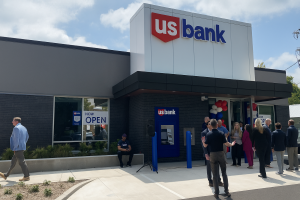Business
By: Or Sushan
Date: June 20, 2025
The landscape of banking is evolving rapidly, particularly in Switzerland, where digital banks are making significant strides. As we look forward to 2026, several emerging trends are set to reshape the way consumers engage with their finances. With a focus on customer experience, technology integration, and sustainability, Swiss digital banks are preparing to lead the charge in the banking revolution.
Expect Swiss digital banks to prioritize a seamless and personalized customer experience. Innovations in artificial intelligence (AI) and machine learning (ML) will play a pivotal role in understanding user behavior and preferences. Here’s what you can anticipate:
Blockchain technology is set to transform operations in Swiss digital banks by improving security and transparency. Here’s how:
As global awareness of environmental issues grows, Swiss digital banks are expected to adopt more sustainable practices. Here’s what that will involve:
Collaboration will be a key trend as Swiss digital banks seek partnerships with fintech companies to enhance their services. The benefits of these partnerships include:
Open banking is another trend that will gain traction by 2026. This concept will allow third-party providers to access customer data (with permission) to offer tailored financial services. The advantages include:
As we near 2026, these emerging trends highlight the direction Swiss digital banks are headed. With an emphasis on customer-centric strategies, technology integration, and sustainability, the future of digital banking in Switzerland promises to be innovative and responsive to the needs of its users. Whether you are a long-time customer or new to the banking scene, these advancements will likely make managing your finances smoother and more engaging than ever before.
In the ever-evolving world of finance, Swiss banks have traditionally stood as beacons of stability and trust. Yet, with the rise of technology, digital banking is shifting the landscape in Switzerland. Understanding the differences between traditional banking and digital banking can help you make informed financial decisions.
Traditional banking in Switzerland has a rich history. Whether it’s personal accounts or complex investment portfolios, Swiss banks have long been synonymous with high standards and reliability. Here are some key features:
On the other hand, digital banking is rapidly gaining foothold in Switzerland. This modern approach to banking provides unique advantages and challenges that many find appealing. Here’s how digital banking stands out:
Fees associated with banking can heavily influence your choice between traditional and digital banking. Here’s a quick comparison to consider:
When it comes to customer support, both traditional and digital banks offer various options:
The safety of your money is paramount, regardless of the banking type. Comparing their security measures reveals interesting insights:
Ultimately, the choice between traditional and digital banking depends on your preferences and lifestyle. Some people value personal interactions and the reputation of established banks, while others appreciate the flexibility and modern conveniences offered by digital banks. If you’re tech-savvy and prefer online interactions, digital banking might suit you better. On the other hand, if you enjoy the reassurance of in-person services and discussions, traditional banks may be the way to go.
In Switzerland’s unique financial environment, both traditional and digital banking continue to co-exist. Your distinct needs and preferences will play a vital role in making the right choice. Keep evaluating your options, and consider how each banking approach can aid you in managing your finances efficiently.
As we gaze into the future of Swiss digital banking, it’s clear that significant changes are on the horizon. The rise of technology-driven solutions is reshaping how Swiss residents and businesses view their financial institutions. Digital banks are poised to enhance user experiences through innovative offerings such as personalized financial management tools, streamlined account access, and real-time transaction notifications. By 2026, these digital platforms not only aim to simplify banking but also cater to the unique needs of their customers, allowing them to manage their finances more efficiently than ever before.
The contrast between traditional banking and digital banking in Switzerland continues to deepen. While traditional banks once dominated the landscape with their brick-and-mortar branches and established reputations, the new generation of digital banks is shifting expectations. Consumers are increasingly valuing convenience, lower fees, and access to cutting-edge technology. This shift is prompting even established banks to innovate and enhance their digital offerings to meet the growing market demand.
As the Swiss banking sector evolves, it will be interesting to see how emerging digital banks adopt new technologies like artificial intelligence and machine learning to further enhance their service delivery. The competition will drive improvements across the board, benefiting customers with better rates, services, and user experiences. Keeping an eye on these trends will be essential for anyone looking to navigate the future of banking in Switzerland, ensuring that you are well-prepared to take advantage of the exciting developments that lie ahead.




